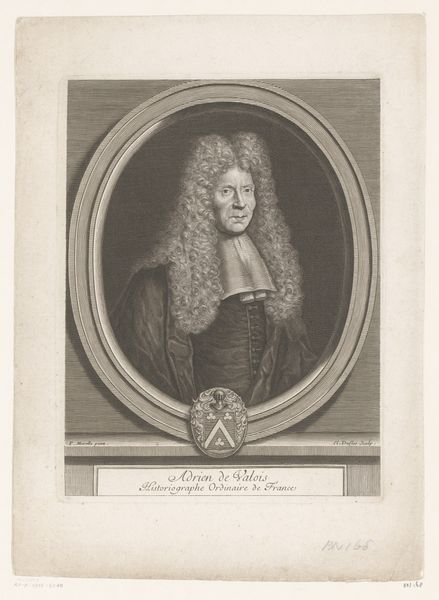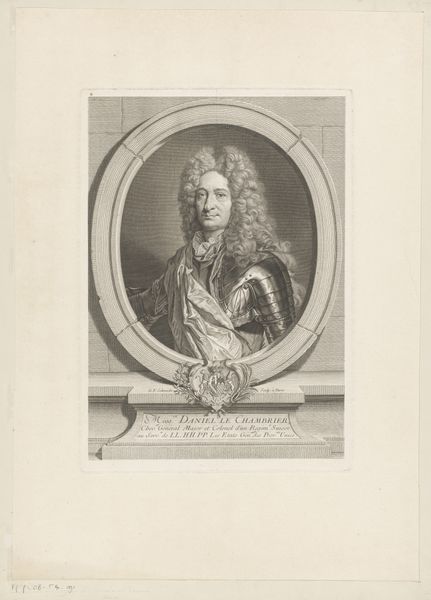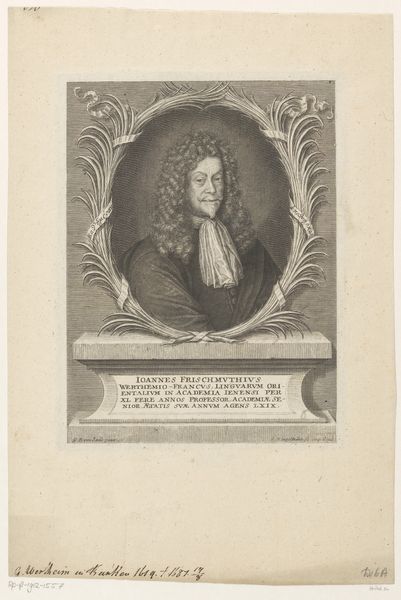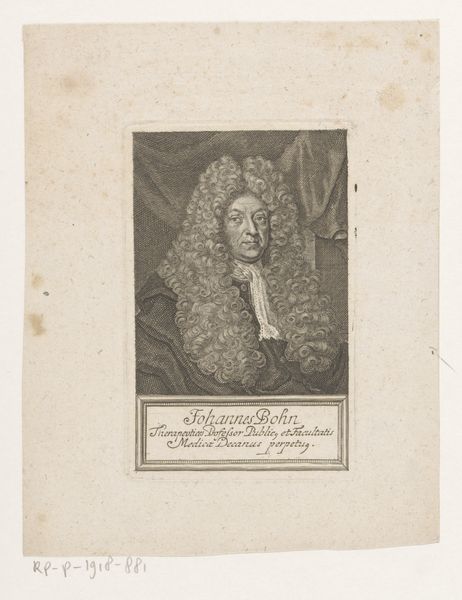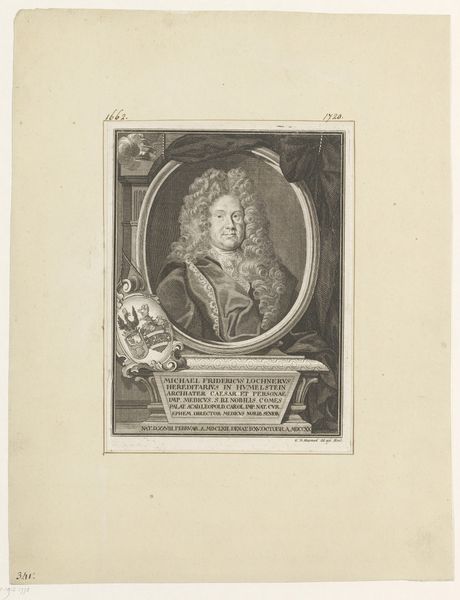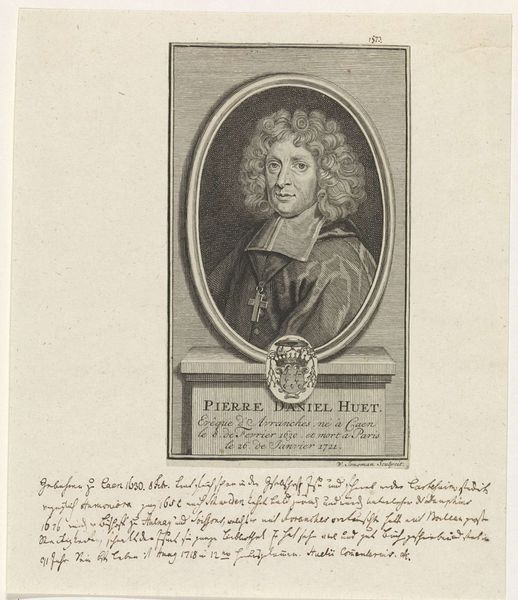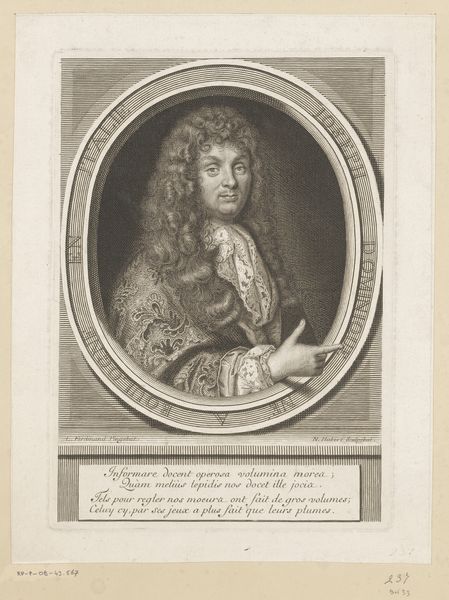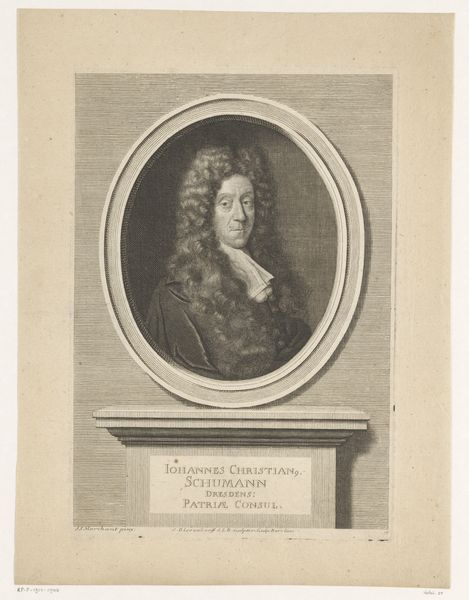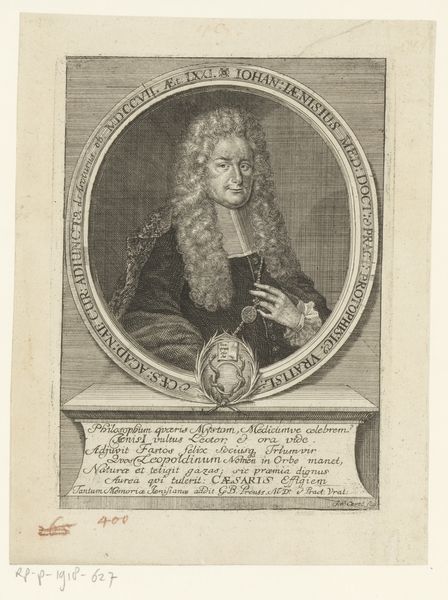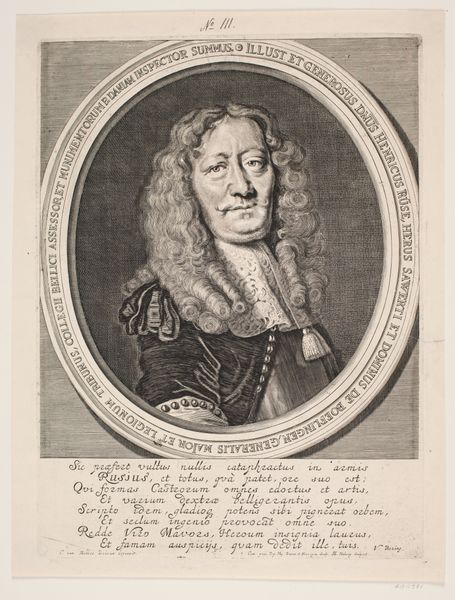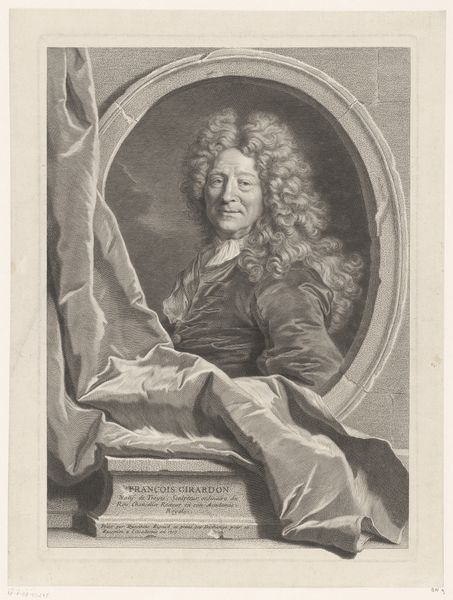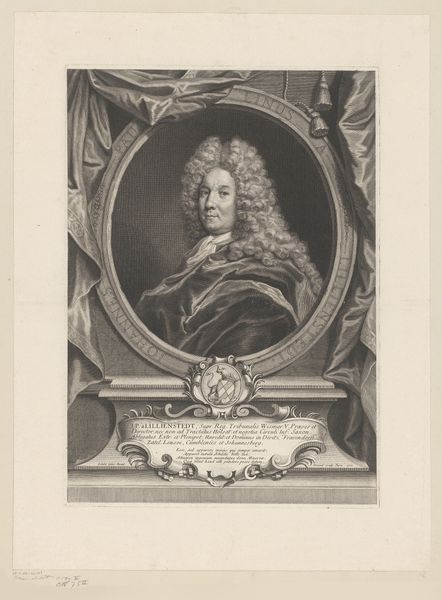
print, engraving
#
portrait
#
baroque
# print
#
engraving
Dimensions: height 140 mm, width 99 mm
Copyright: Rijks Museum: Open Domain
Curator: This is a print, specifically an engraving, titled "Portret van François Girardon." It was created sometime between 1700 and 1751 by Pierre Dupin. Editor: It has a stately feel to it, wouldn't you agree? The subject, framed within an oval, seems confident and composed, but the whole thing also feels rigid. Curator: The Baroque style is certainly evident in the detail of the engraving. You can see it most notably in the meticulous rendering of Girardon's wig, which demonstrates the engraver's skill in manipulating line and texture, particularly when considering the material constraints inherent in the engraving process. The social context is essential too, as it was a method for mass production of likeness to celebrate someone with public image. Editor: Absolutely, prints like these played a critical role in disseminating imagery and solidifying reputations within the court. Dupin carefully crafted this portrait of Girardon, *Sculpteur du Roy*, Sculptor of the King, we see proudly presented below, reflecting Girardon’s elevated position within French society and royal circles at the time. It wasn't just a piece of art, but a statement of status and a form of public relations. Curator: Exactly, the lines made by Dupin reflect not just the individual depicted but also the whole system of patronage, craftsmanship, and production within which he worked. Editor: And let’s not forget the economics involved. Prints like this were produced and distributed widely, indicating the social desire for the imagery and visibility that came with portraying or possessing a figure of stature. We see in them also an indication of period artistic movements and court’s patronage. It serves to remember him in a time of cultural shifting that valued luxury and spectacle in contrast to the emerging focus on functionality. Curator: That’s insightful. Understanding how those elements contribute to this portrait gives a much richer perspective on Dupin's engraving than solely aesthetic appreciation could offer. Editor: Indeed, art like this acts as a historical mirror, reflecting not just individuals, but also power dynamics and artistic practices of its era. Curator: Precisely, and Dupin’s methods are a testament to the socio-economic importance of creating art in service to prestige and public memory. Editor: That gives me a new respect for this print.
Comments
No comments
Be the first to comment and join the conversation on the ultimate creative platform.
